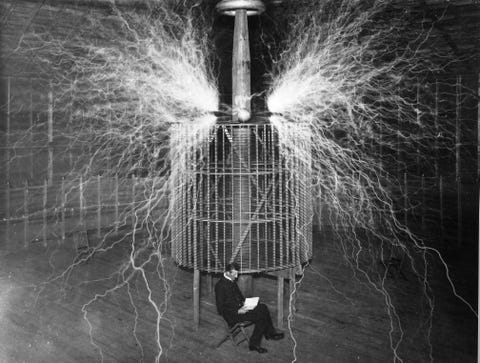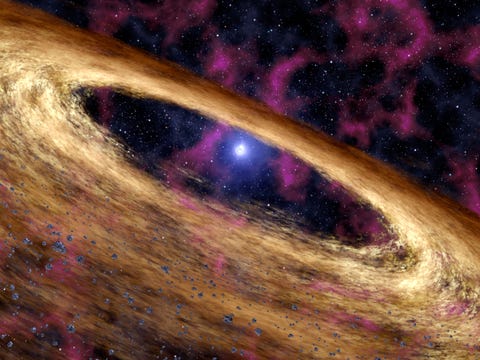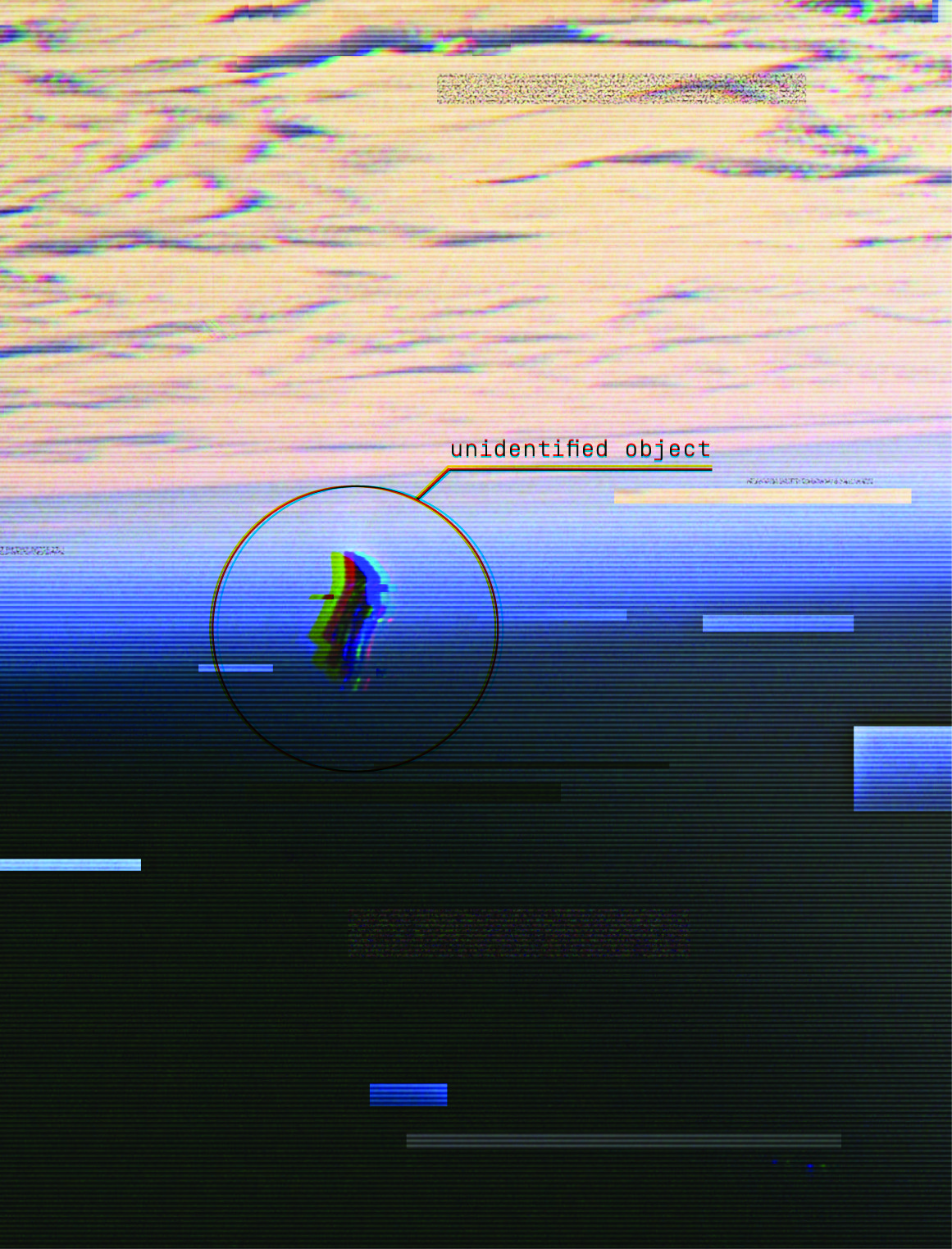Some believe it’s an extraterrestrial spacecraft. NASA says it’s probably just space junk. Here are the facts.
Take a closer look at the photo above. In 1998, during the first Space Shuttle mission to the International Space Station, NASA captured this image of a mysterious black object orbiting Earth (ISS).
The strange item is called STS088-724-66 in NASA’s catalog of space debris orbiting low on Earth (within 1,200 miles). According to Jerry Ross, an astronaut who served on that mission, the object is a lost thermal cover that came detached while his team was attempting to connect an American module to a Russian module aboard the ISS. There is a small, devoted following that believe in the 13,000-year-old Black Knight satellite. So could this peculiar object really be of alien origin? Or is it just an innocuous piece of space debris?

Image Credit: Mondadori Portfolio//Getty Images
The Black Knight began with Nikola Tesla, who claimed to have received radio transmissions from space during his 1899 radio studies in Colorado Springs. He thought Martians were attempting to communicate with people through numbers since they’re a global language.
Tesla narrated his experience in a Collier’s Weekly article published in February 1901. “The changes I noted were taking place periodically and with such a clear suggestion of number and order that they were not traceable to any cause then known to me… The feeling is constantly growing on me that I had been the first to hear the greeting of one planet to another.”
The famous Black Knight truthers point to this as the beginning of their satellite, which transmitted radio pulses. Scientists now know that those radio pulses were most likely naturally occurring signals produced by space objects while in flight. The most likely theory, though still improbable, is that Tesla heard a pulsar, or an entity in space that regularly emits radio waves. Granted, the Black Knight could have emitted such pulses too; however, this does not make it extraterrestrial.

JPL-CALTECH/NASA/SPL//Getty Images
However, in 1927, civil engineer and amateur radio operator Jørgen Hals discovered an odd characteristic to his radio transmissions, which spread the idea that aliens were communicating with Earth using radio pulses. As he sent out signals from his house in Oslo, they would occasionally return to him unexpectedly. This was seen as a sign of alien visitation by Hals.
Nearly 50 years later, an article in Analog Science Fiction and Fact tried to make sense of Hals’s radio echoes. The author, Duncan Lunan, posited that a 13,000-year-old object orbiting the moon could have led to the long-delayed echoes (the 13,000 figure having to do with the positioning of the North Pole star, Polaris). “I tried plotting the delay times against the order in which the echoes were received…and at only the second attempt I found what looked like a star map,” Lunan said in 1998. However, we now understand those signals as “long-delayed echoes,” which you can hear about 2.7 seconds or more after a radio transmission. And Lunan has disavowed the Black Knight hypothesis since then.
Another loose end: In 1960, TIME reported that the US Navy had discovered an unidentified satellite that might have been a piece of Soviet spy technology. It was later determined to be a broken-off section of the Discoverer 5—an early US photo reconnaissance (spy) satellite—but believers still cite it as proof.
The Black Knight satellite, like any good conspiracy theory, has a few amusing quirks and some high-profile bonuses to lend it credence. In 1963, for example, Project Mercury astronaut Gordon Cooper is said to have noticed a UFO during his 15th orbit aboard the Faith 7 spacecraft according to the Armagh Observatory and Planetarium in Northern Ireland. Despite the fact that Cooper has subsequently published transcripts to the contrary, claiming he never saw an alien spacecraft during that mission, Black Knight supporters include this narrative in the conspiracy theory genesis tale.
“It’s astonishing that there aren’t more conspiracy theories about stuff in space.”
The Black Knight satellite, on the other hand, is almost certainly a sequence of discrete events that can account for it: Tesla picking up pulsars or some other natural signal, Hals obtaining an echo, TIME reporting on a secret U.S. government satellite in good faith, and the ISS crew seeing a missing blanket in orbit are all likely possibilities.
The Black Knight satellite conspiracy is psychologically appealing because people want to believe in it, says Alice Gorman, Ph.D., an associate professor at Flinders University in Adelaide, Australia, who studies space archaeology.
“It’s astonishing that there aren’t more conspiracy theories about stuff in space,” she says. “It’s really difficult to see details on stuff in Earth’s orbit, even through really high-powered telescopes. So when you can’t see it, then you can imagine anything about it.”
Although NASA and other space groups maintain lists of the space junk they come across, these records are still inaccurate and rely on countries sharing at times classified information.
“There’s stuff that might have a catalog number, but we don’t actually know what it is,” she says. “That makes it a bit easier to say, ‘Well, here’s this mysterious object that comes from somewhere else.’”
According to Gorman, the Black Knight image shows a large cross-section of the thermal blanket in orbit, which appears to the human eye like a huge, solid item. The image is possibly an optical illusion, which isn’t surprising given that people often mistake birds and airplanes for UFOs, she says.
There’s still this huge gap in the Black Knight satellite conspiracy theory: How can an object orbit for 13,000 years? “You have to use fuel and have rocket engines and stuff to just stay up there… Is this some amazing new propulsion system that we don’t know anything about yet on Earth?” Gorman wonders.
NASA captured this image during the STS-88 Space Shuttle mission while 246 miles above the coast of Namibia and looking north.
How the Black Knight Could Exist
Let’s suppose the Black Knight satellite actually exists. How could it go unnoticed for 13,000 years? Gorman’s first idea is to mimic space junk that measures 10 centimeters or less. Larger objects are more closely scrutinized by space organizations. “We’re going to assume that aliens have much more advanced technology than us, so something [that size] could be just as advanced as something the size of a house.”
To prevent collisions with other scraps of space junk, aliens may have invented miniature force field technology to protect their probe from being hit, according to Gorman. If we think long-term, there’s a chance that Earth could have its own ring system – made up of defunct satellites in what is known as the “graveyard orbit.” This graveyard orbit is about 190 miles above most active satellites. When the time comes, Gorman says the Black Knight will have to make a choice: “Will it join this ring and risk detection, or run away and hide?”

